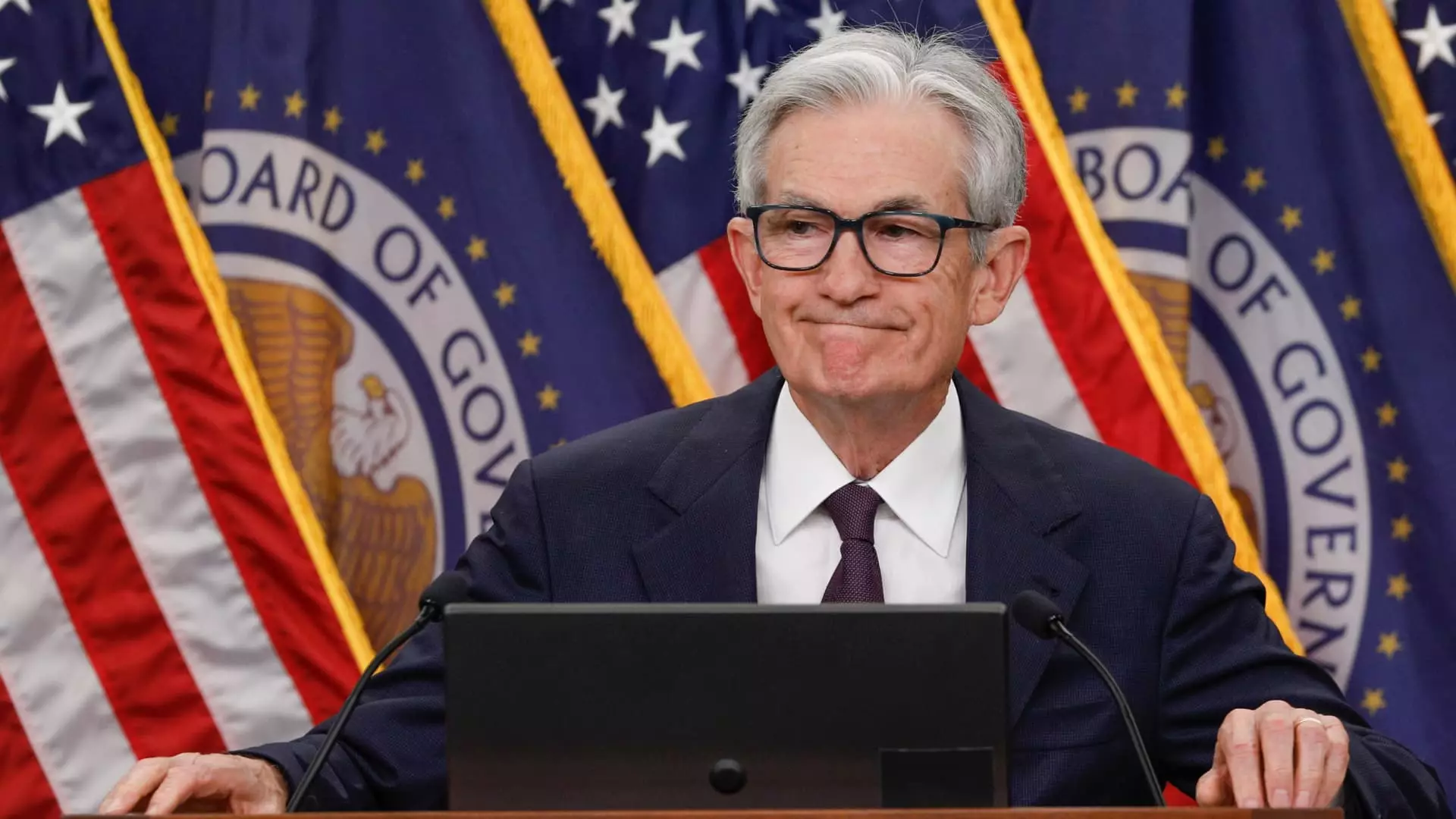Federal Reserve Chair Jerome Powell stands on a precarious ledge as he prepares to testify before Congress this week. The stakes have never been higher; a confluence of external pressures, both from the political realm and within the confines of the Federal Reserve itself, are pushing him to contemplate a shift in the nation’s monetary policy. This semiannual appearance before Congress, normally a platform for the Fed to espouse economic data and decisions devoid of political maneuvering, now feels uncomfortably charged. With figures from the White House, including former President Donald Trump, vocally advocating for aggressive interest rate cuts, the independence of the Fed—an institution designed to act free from political influence—faces scrutiny and skepticism.
Against this backdrop, Powell’s upcoming testimony holds the potential for drama that few anticipated. Traditionally, these sessions provide an opportunity for the Fed Chair to deliver remarks, followed by a structured Q&A from lawmakers who often seem more interested in making points for their political bases rather than teasing out nuances in monetary policy. However, the pressure is on; both Republicans and Democrats are keenly aware of the consequences of failing to address stakeholders’ concerns on the cost of borrowing amid economic uncertainty, which adds layers to an already complicated economic environment.
The Political Quagmire: Chaos or Coordination?
What’s particularly troubling is the emerging clamor from within the Federal Reserve itself. Fed officials, including those appointed during Trump’s presidency, are signaling an unexpected willingness to consider interest rate cuts, possibly even this month. Their remarks add a confusing layer to an already complex interplay of voices clamoring for action. This discord raises questions about the coherence of the Fed’s messaging and strategic approach moving forward. Mohamed El-Erian, an influential economist, emphasizes that a divergence in perspectives among Fed governors compromises Powell’s ability to maintain a unified policy front. The implications of this rift go beyond mere internal strife; they threaten the credibility of the Federal Reserve in a time when stability and certainty are paramount.
While one might argue that some dissent can foster healthy debate and a more comprehensive examination of policy, it could also foster a chaotic environment that leads to decisions driven by political gain rather than sound economic reasoning. Indeed, should the Fed opt for a rate cut simply in response to political pressure—be it from the executive branch or ambitious lawmakers—it risks prioritizing short-term political wins over the long-term economic health of the nation.
The Pitfalls of Political Interference
This situation reveals a gross misunderstanding of the Federal Reserve’s true mission and responsibilities. As Fed Governor Christopher Waller pointed out in a recent interview, the intention should not be to expedite interest rate cuts merely to assuage political demands. Such a rapid shift could backfire, leaving long-term economic growth jeopardized. The fundamental role of the Fed circles back to its dual mandate: to stabilize prices and keep unemployment in check. Turning its focus to political pressure for a sudden and significant easing of monetary policy can only lead to instability in financial markets and a potential loss of faith from the public and investors alike.
Indeed, when interest rates were cut dramatically in the past, the resultant effects were paradoxical. Treasury yields increased rather than decreased, highlighting the complexities of market reactions—an illustration that interest rate manipulations do not guarantee the immediate economic outcomes that policymakers often expect. This disconnect signifies the inherent risks of applying political pressure to the inherently delicate ecosystem of monetary policy.
The Consequences of Blindly Following Demand
Commentators argue that Powell and the Fed’s leadership must tread carefully. Missteps in monetary policy may not only threaten the economic landscape but could also severely undermine public confidence in the institution itself. Calls for immediate cuts in response to political rhetoric may placate critics momentarily but fail to satisfy the rigorous benchmarks of sound policy-making.
Economic recovery is a nuanced dance, not an on-off switch. Market players and advisors highlight the need for patience—the same virtue that Powell himself has preached in meetings with FOMC members. The mantra for economic policy should never be characterized merely by reactionary approaches, especially when navigating a wildfire of political pressure. If Powell’s tenure is overshadowed by a reputation for capitulation to political whims, it will set a troubling precedent for future policy-makers who might find themselves succumbing to external pressures as well.
Navigating the precarious intersection of politics and economics will require strong fortitude from Powell and his colleagues. The integrity and mission of the Federal Reserve depend on sticking to its dual mandate, even amidst the noise of political discontent. The path forward is isolated from whims and demands; it should be grounded in a rigorous analysis of economic trends that transcend the transient.

